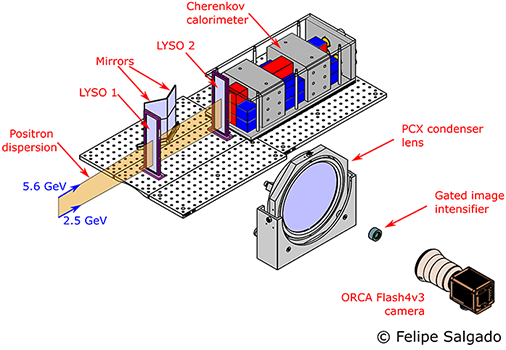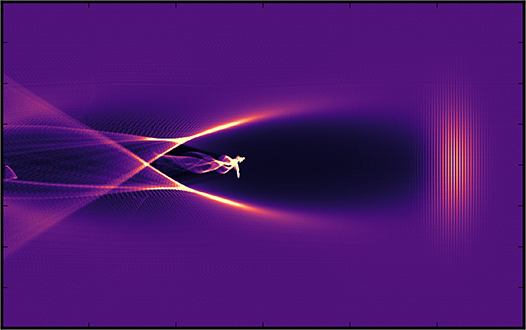Pair-Production in the Non-Perturbative Regime
Quantum Vacuum Research Unit FOR/2783 Permalink
The direct electron-positron pair creation via quantum-vacuum fluctuations is one of the most intriguing physics processes that remain untested under laboratory conditions. By applying a strong electric field above the Schwinger critical limit of 1.3$\times$10$^{18}$ V/m, the virtual pairs from the quantum fluctuations can be turned into observables. However, despite the recent advances in the peak power of high-intensity lasers, the critical limit is still far beyond achievable.
Objectives: To develop a functional experiment and a detection system within the ATLAS-3000 laser system at the Centre for Advanced Laser Applications (CALA), capable of both generating and diagnosing electron-positron pairs originating from these quantum-vacuum fluctuations.

More about the topic:
- F. C. Salgado, K. Grafenstein, A. Golub, A. Doepp, A. Eckey, D. Hollatz, C. Mueller, A. Seidel, D. Seipt, S. Karsch, M. Zepf, “Towards pair production in the non-perturbative regime,” New J. Phys. 23, 2021
doi:10.1088/1367-2630/ac2921 - B. Kettle, D. Hollatz, E. Gerstmayr, G. M. Samarin, et al., “A laser-plasma platform for photon-photon physics: the two photon Breit-Wheeler process,” New J. Phys. 23, 2021
doi:10.1088/1367-2630/ac3048 - H. Abramowicz, et al., “Conceptual design report for the LUXE experiment,” Eur. Phys. J.: Spec. Top. 230, 2021
doi:10.10.1109/10.1140/epjs/s11734-021-00249-z


